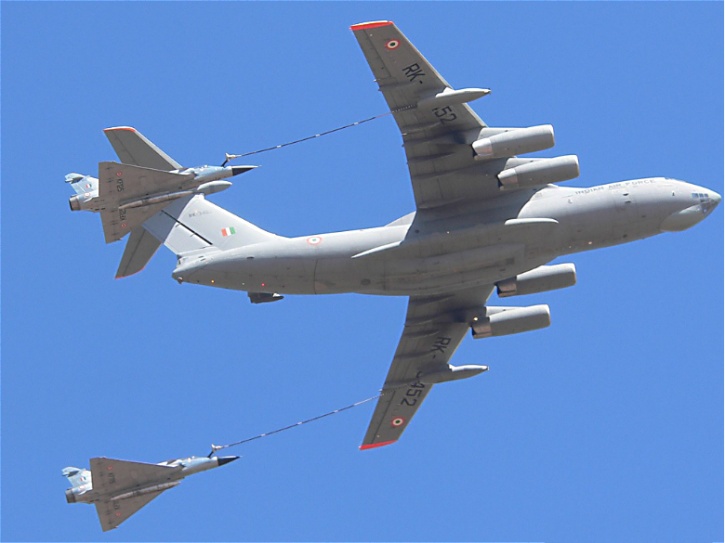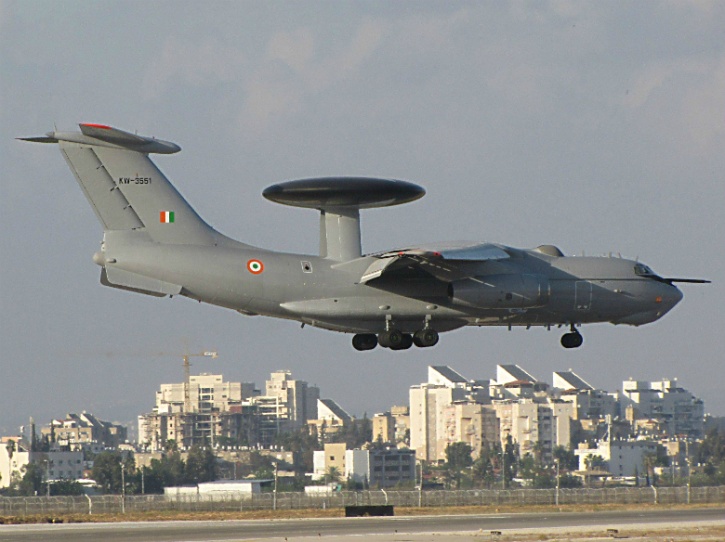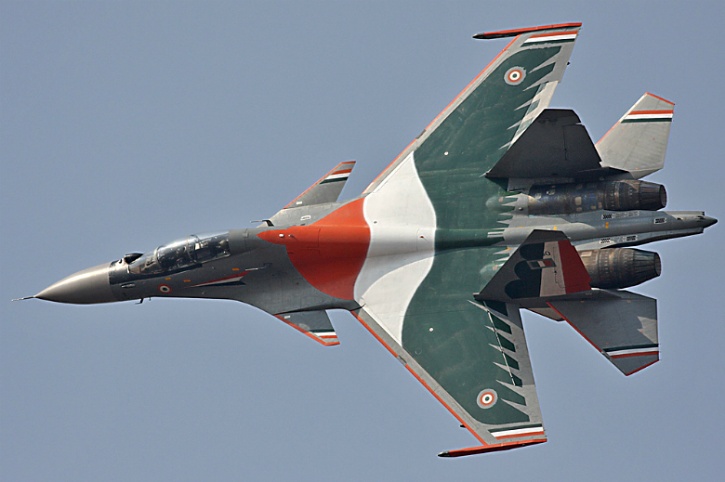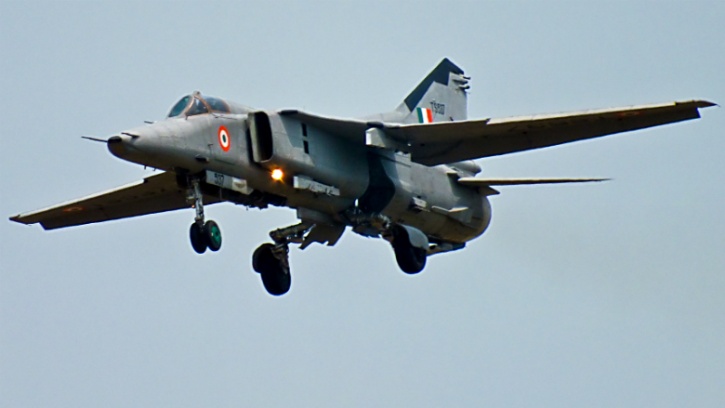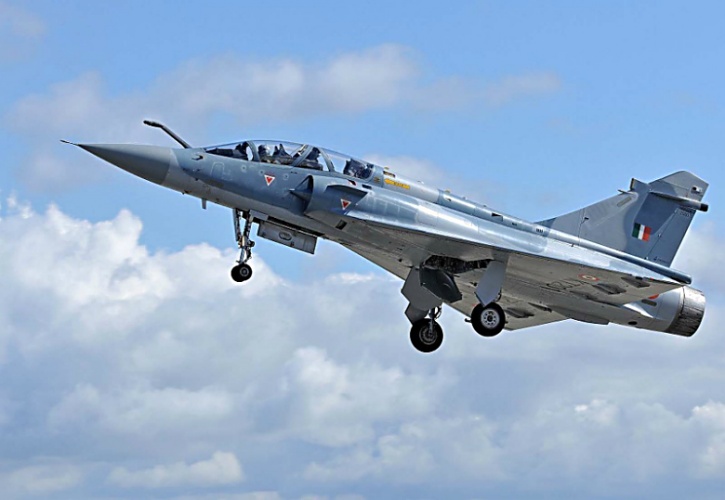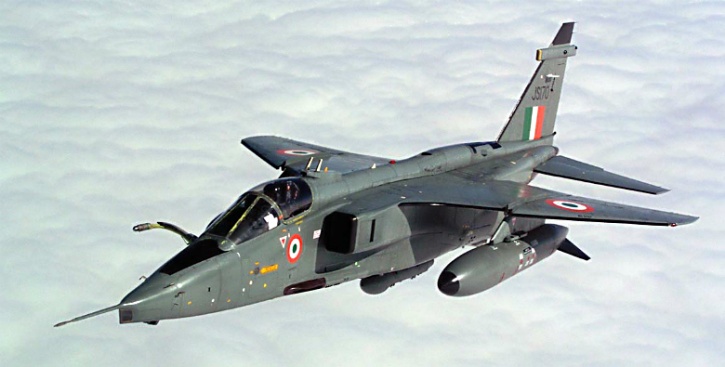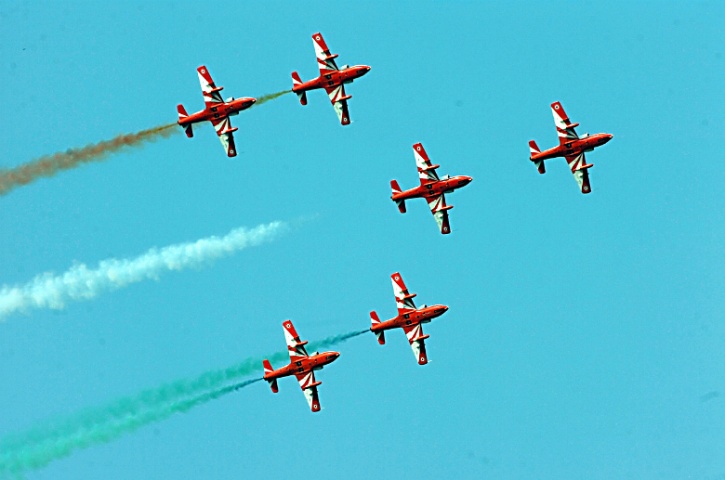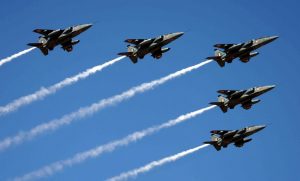
19 Warbirds Of The Indian Air Force That Keep The Skies Safe
The Indian Air Force is the air arm of the Indian armed forces. Its primary responsibility is to secure Indian airspace and to conduct Aerial warfare during a conflict. It was officially established on 8 October 1932 as an auxiliary air force of the British Empire and the prefix Royal was added in 1945 in recognition of its services during World War II. The President of India Pranab Mukherjee serves as the ex-officio Commander-in-Chief of the IAF. It has a mix of potent planes which includes heavy multirole fighters that keep the enemy fighters at bay, deep penetration strike aircraft for taking out ground targets deep into enemy territory, and air lifters for transporting troops and equipment to the most inhospitable areas. The Indian Air Force is keeping the skies safe and here are the warbirds that make this possible.
Here we provide 19 Warbirds Of The Indian Air Force. These are categorized as Special Mission Aircraft, Fighters, Trainers and Transport Aircrafts. In Special mission Aircrafts we have 3 Aircrafts, In Fighters we have 7 and In Trainers and Transport Aircrafts we have 3 and 6 respectively.
Special Mission Aircrafts:
1.Ilyushin IL-78
The Ilyushin Il-78 (NATO reporting name Midas) is a four-engined aerial refuelling tanker based on the Il-76.
Based on the Il-76, the Il-78 aerial refueling aircraft plays an important role in extending the operational range of aircraft like the Su-30, Mig-29 and Mirage 2000. The Il-78 can refuel up to three planes at a time.
2.Beriev A-50
The Beriev A-50 is a Soviet-built Airborne early warning and control (AEW) aircraft based on the Ilyushin Il-76 transport. Developed to replace the Tupolev Tu-126 “Moss”, the A-50 first flew in 1978. It entered service in 1984, with about 40 produced by 1992.
Another derivative of the Il-76, the A-50 came about as a result of a tripartite agreement between India, Israel and Russia. The ‘eye in the sky’ can look deep into enemy territory and directs fighters towards enemy planes.
3.EMB-145 AWECS
India’s second line of Airborne Early Warning and Control Systems aircraft, the Embraer 145 is going to induct three of these. Friendly countries have expressed interest in the aircraft and it may soon be exported.
Fighters
4.Sukhoi 30 Mki
The Sukhoi Su-30MKI is a super manoeuvrable twinjet air superiority fighter developed by Russia’s Sukhoi and built under licence by India’s Hindustan Aeronautics Limited (HAL) for the Indian Air Force (IAF). A variant of the Sukhoi Su-30, it is a heavy, all-weather, long-range fighter.
India’s premier multi-role air superiority fighter, it can fly at twice the speed of sound and has a range of more than 3,000 km which can be extended with in-flight refueling.
5.Mig-21 BIS
The Mikoyan-Gurevich MiG-21 is a supersonic jet fighter aircraft, designed by the Mikoyan-Gurevich Design Bureau in the Soviet Union. It was popularly nicknamed “Balalaika”, from the aircraft’s planform-view resemblance to the Russian stringed musical instrument by Polish pilots due to the shape of its fuselage.
India’s first supersonic fighter, the Mig-21’s iconic tailed delta wing configuration makes it the most easily recognisable planes in the world. It is scheduled for retirement in the coming years.
6.Mig-29
The Mikoyan MiG-is a twin-engine super maneuverable jet fighter aircraft designed in the Soviet Union. Developed by the Mikoyan design bureau as an air superiority fighter during the 1970s, the MiG-29, along with the larger Sukhoi Su-27, was developed to counter new American fighters such as the McDonnell Douglas F-15 Eagle, and the General Dynamics F-16 Fighting Falcon.The MiG-29 entered service with the Soviet Air Force in 1983.
This air superiority fighter was responsible for keeping the Pakistani F-16 at bay during the Kargil War. Currently being upgraded to the UPG standard.
7.Mig-27
The Mikoyan MiG-is a variable-geometry ground-attack aircraft, originally built by the Mikoyan design bureau in the Soviet Union and later license produced in India by Hindustan Aeronautics as the Bahadur (“Valiant”). It is based on the Mikoyan-Gurevich MiG-23 fighter air craft, but optimized for air-to-ground attack. Unlike the MiG-23, the MiG-27 did not see widespread use outside Russia, as most countries opted for the MiG-23BN and Sukhoi Su-22 instead. It currently only remains in service with the Indian, Kazakh and Sri Lankan Air Forces in the ground attack role. All Russian and Ukrainian MiG-27s have been retired.
One of the few swing-wing fighters in service across the world, the Mig-27 was an upgrade to the Mig-23. It serves the role of a ground attack aircraft in the Indian Air Force.
8.Mirage 2000
The Dassault Mirage 2000 is a French multirole, single-engine fourth-generation jet fighter manufactured by Dassault Aviation. It was designed in the late 1970s as a lightweight fighter based on the Mirage III for the French Air Force.The Mirage 2000 evolved into a multirole aircraft with several variants developed, with sales to a number of nations. The variants include the Mirage 2000N and 2000D strike variants, the improved Mirage 2000-5 and several export variants.Over 600 aircraft were built and it has been in service with nine nations.
Capable of carrying nuclear weapons, it was the precision bombing during the Kargil War by the Mirage 2000 that was responsible for flushing out the bad guys. The fleet is being upgraded to I/TI standard and will remain in service till 2040.
9.The HAL Tejas
The HAL Tejas is an Indian single-seat, single-jet engine, multi-role light fighter developed by Hindustan Aeronautics Limited. It is a tailless,[N 1] compound delta wing design powered by a single engine. It came from the Light Combat Aircraft (LCA) programme, which began in the 1980s to replace India’s ageing MiG-21 fighters. Later, the LCA was officially named “Tejas”, meaning “Radiant” by the then Prime Minister Atal Bihari Vajpayee.
Inducted into the Indian Air Force, the Tejas is expected to receive the Final Operation Clearance (FOC) this year. This means that IAF pilots will soon be able to fly it to its limits. An improved Mk 2 version is also in the works.
10.SEPECAT Jaguar
The SEPECAT Jaguar is an Anglo-French jet attack aircraft, originally used by the British Royal Air Force and the French Armée de l’Air in the close air support and nuclear strike role, and still in service with the Indian Air Force.
The twin-engined Jaguar is unique in the way it mounts its air-to-air missile over the wings. This frees up space for bombs on the underwing pylons. The Indian Air Force also uses it for naval strike role.
Transport Aircrafts
11.Boeing C-17 Globemaster
The Boeing C-17 Globemaster III is a large military transport aircraft. It was developed for the United States Air Force (USAF) from the 1980s to the early 1990s by McDonnell Douglas. The C-17 carries forward the name of two previous piston-engined military cargo aircraft, the Douglas C-74 Globemaster and the Douglas C-124 Globemaster II. The C-17 commonly performs strategic airlift missions, transporting troops and cargo throughout the world; additional roles include tactical airlift, medical evacuation and airdrop duties.
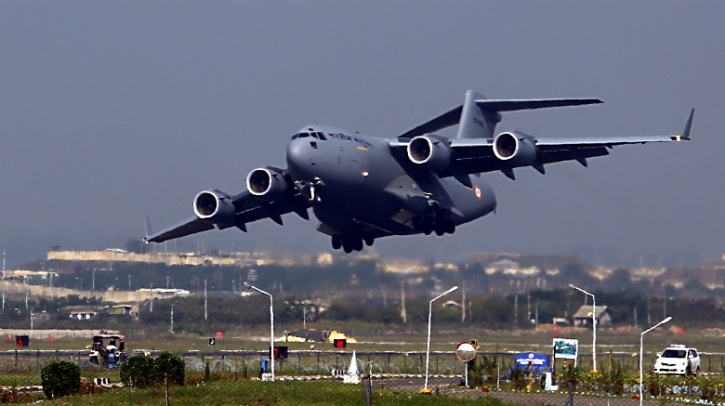
Significantly boosting the Indian Air Force’s heavy lift capabilities, the C-17 has been at the forefront of the recent rescue missions in the Middle East and Nepal. With a total order of 10 planes, India will become the largest operator of the plane outside of the US.
12.Ilyushin Il-76
The Ilyushin Il-76 is a multi-purpose four-engine strategic airlifter designed by the Ilyushin design bureau. It was first planned as a commercial freighter in 1967, as a replacement for the Antonov An-12. It was designed for delivering heavy machinery to remote, poorly served areas of the USSR. Military versions of the Il-76 have seen widespread use in Europe, Asia and Africa, including use as an airborne refueling tanker or as a command center.
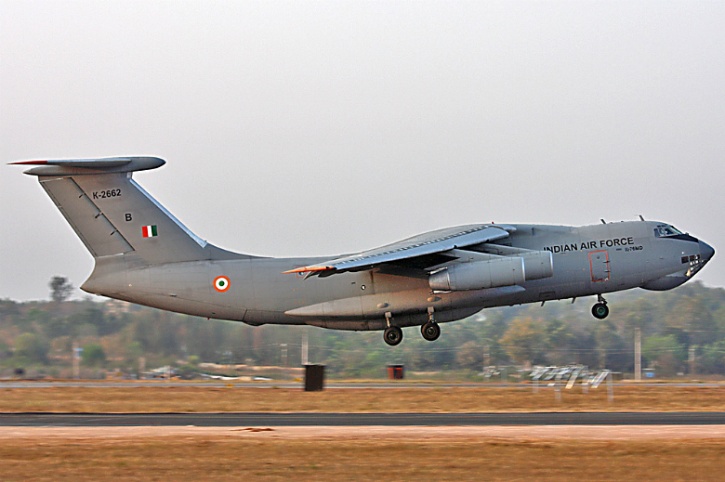
Before the Globemaster, the IL-76 was India’s heavy lifter of choice. It still is in service and supplements the IAF whenever there’s need for long distance transportation.
13.Avro HS 748
The Hawker Siddeley HS 748 is a medium-sized turboprop airliner originally designed by the British firm Avro in the late 1950s as a replacement for the aging DC-3s then in widespread service as feederliners. Avro concentrated on performance, notably for STOL operations, and found a dedicated market. 380 aircraft were built by Hawker Siddeley. A larger, stretched development of the HS 748, the BAe ATP, attempted to compete with the de Havilland Canada Dash 8 but saw a limited production run.
India was the only other country to have produced this long serving tactical transport. The type will soon be replaced by the Airbus C295.
we do have other 3 transport aircrafts like Dornier Do 228, Antonov An-32 and Lockheed Martin C 130J Super Hercules.
Trainers
17.BAE Hawk
The BAE Systems Hawk is a British single-engine, jet-powered advanced trainer aircraft. It was first flown at Dunsfold, Surrey, in 1974 as the Hawker Siddeley Hawk, and subsequently produced by its successor companies, British Aerospace and BAE Systems, respectively. It has been used in a training capacity and as a low-cost combat aircraft.
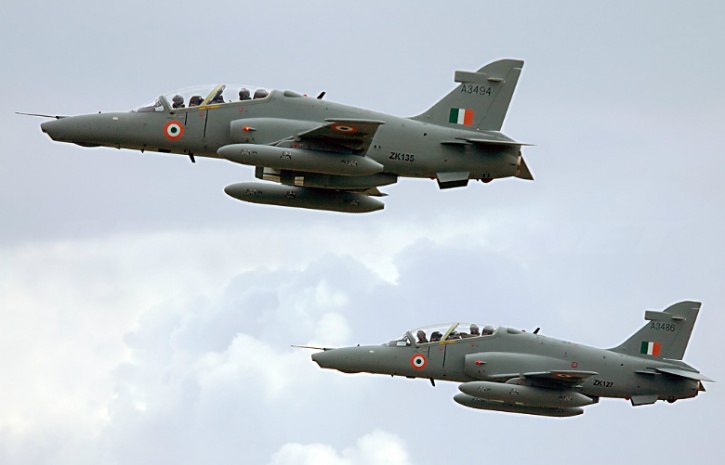
Used for providing the final stage training to IAF pilots, the Hawk can also be used in combat role. The Hawk will also be used to form IAF’s display team, the Surya Kirans, this year.
18.HAL HJT-16 Kiran
The HAL HJT-16 Kiran (Ray of Light) is an Indian two-seat intermediate jet trainer built by Hindustan Aeronautics. Used by the Indian Air Force for intermediate training for pilots trained on the HPT-32 Deepak. It is used by the Indian Air Force aerobatic team Surya Kiran and Indian naval aerobatic team Sagar Pawans.
India’s homegrown intermediate jet trainer has been used for training IAF pilots. But it is more famous for giving its name to the Surya Kiran display team. The Kiran is likely to be replaced by the HJT-36 which is under development.
19.Pliatus PC-7
IAF’s rookie pilots are trained on the Pliatus, which features a tandem cockpit with the trainer sitting in the back monitoring the pupil sitting in the front. IAF has recently placed an order for 38 more of this basic trainer.
